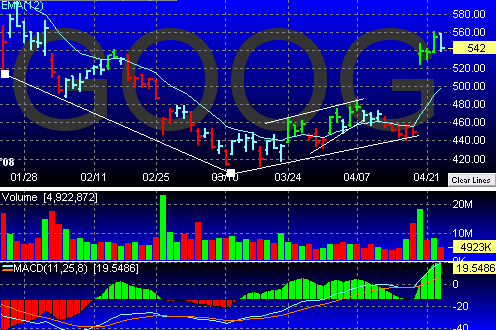Thinking about karma (pali: kamma), many people entertain a popular notion that your past bad and good karma is similar to a bag pack which you carry with you. On occasion the understanding of kamma also comes pretty close to some kind of retribution system.
karma is similar to a bag pack which you carry with you. On occasion the understanding of kamma also comes pretty close to some kind of retribution system.
Faced with the question how kamma is passed on from life to life if there is no soul carrying a basket of good and bad deeds many wondered how to get a better understanding of what karma is.
After all, kamma seems to be such a good way of explaining all kinds of inequalities in life: The beauty and the ugly, the rich and the poor, the dumb and the smart, the short and long lived…it makes so much more sense, if we introduce a natural moral law and let cause and effect do the work they do elsewhere pretty reliably.
In the Milindapanha, the Western (Greek) schooled king Menandros (yes, ‘Western’ Theravada is quite old and started in India 🙂 ) had his own hard time understanding karma and asked the Buddhist monk Ven. Nagasena this question:
8. Rājā āha ‘‘bhante nāgasena, iminā nāmarūpena kammaṃ kataṃ kusalaṃ vā akusalaṃ vā, kuhiṃ tāni kammāni tiṭṭhantī’’ti? ‘‘Anubandheyyuṃ kho, mahārāja, tāni kammāni chāyāva anapāyinī’’ti [anupāyinīti (ka.)]. ‘‘Sakkā pana, bhante, tāni kammāni dassetuṃ ‘idha vā idha vā tāni kammāni tiṭṭhantī’’’ti? ‘‘Na sakkā, mahārāja, tāni kammāni dassetuṃ ‘idha vā idha vā tāni kammāni tiṭṭhantī’’’ti. ‘‘Opammaṃ karohī’’ti.
The king said: “Bhante Nagasena, these deeds – wholesome or unwholesome – which are done by this name and form, where do they stay?” – “They are bound after, o great king, those deeds, they follow one like a shadow.” – “But can one, Bhante, point out those deeds, saying: ‘Here or there do these deeds exist’? ” – “One cannot, o great king, point out those deeds, saying: ‘Here or there do these deeds exist'” – “Give me an example”.
Especially remarkable is Ven. Nagasenas answer:
‘‘Taṃ kiṃ maññasi, mahārāja, yānimāni rukkhāni anibbattaphalāni, sakkā tesaṃ phalāni dassetuṃ ‘idha vā idha vā tāni phalāni tiṭṭhantī’’’ti. ‘‘Na hi, bhante’’ti. ‘‘Evameva kho, mahārāja, abbocchinnāya santatiyā na sakkā tāni kammāni dassetuṃ ‘idha vā idha vā tāni kammāni tiṭṭhantī’ti.
‘‘Kallosi, bhante nāgasenā’’ti. (Milindapanha, PTS 72)
“What do you think, o great king, of all those trees around here which do not yet bear fruits: can one point them out, saying: ‘Here or there do these fruits exist?’ – ‘Of course not, Bhante’. – In exact the same way, o great king, it is through an unbroken continuation that one cannot point out those deeds, saying: ‘Here or there do these deeds exist'”.
Let us try to build on this answer with a rather modern but amazingly fitting simile: The stock market. For this i would like you to have a look at the chart below, which displays an actual stock chart with its typical ups and downs – distributed among larger trendlines:
Now according to Venerable Nagasena, kamma is something like an built-in (genetic) program. He compares it to the process of growing fruits – which yet do not exist, but are pre-programmed to develop.
Having a look at the stock chart, we might even compare it to the built-in movements a stock price is subjected to while at the same time gravitating towards levels of support, shrinking from levels of resistence and overall following stronger trends.
Without going into details, let us think of an unwholesome deed based on evil intentions as creating a downward inclination. Now the foundation for a bear market has been laid, the foundation for more evil and unwholesome sense impressions to flood into our life and a falling price resembles each moment of life, a series of transactions, a series of rises and falls of sense impressions – but their general trend has now been established by this karmic intention and is pointing largely in one direction: downwards.
Within this large trend (say we killed someone for very mean reasons) there will definitely be moments of upward movements as well. Sometimes it may even look as if the bad karma done has no impact (yet), our life seems to go up for a while. However, this is just based on some other prior positive trends – like a stock price our life will hardly ever move in straight lines. So many past impressions and intentions left their imprints like ripples and waves on a lake.
But to stay with the simile: There is always an expectation to come back to former levels or grounds. Our overall morality seems not to have suffered right away even after maybe a very unwholesome deed, but this one big breach, this setting the downward trend, eventually, was so strong, that it will drag the price down. In this or the next life (depending on past conditions, depending on each and every next step).
Now the fascinating thing with this comparison, is the fact, that if you zoom in and look at the individual transactions between buyers and sellers, you cannot “see” the big trend in each sale – as you cannot see the big trends in each moment of your life, in the moments of seeing, hearing, tasting, smelling, feeling, thinking. But the trend itself cannot exist without those individual moments either.
It is this inherent quality, inherent inclination which the simile given by Ven. Nagasena so nicely captures. Also, looking at our stock chart, we can see such an inherent power of trends. They are based on individual moments, but they are not individual moments. No individual sale carries a “bag” of the minor and larger trends it is part of and yet…it is a part of and creates those trends.
So, in each good life and bad life lived, there are smaller and larger trends. We could say then, that in our current life we enjoy a series of uninterrupted transactions within and without, by seeing, hearing etc. and our intention in each single case is like a little plus or a little minus. Sometimes, like in a real world stock movement, there are those shocking sales…we transgress the five precepts (sila) pointed out by the Buddha and thus set something in motion which we should better have stayed away from.
But it also tells us, that regardless how bad the current situation might look like, it is never to late to start with a change in trend. And even if our “wholesome” rallies may just be short lived…the more we do good, definitely, the further up our price will go:
Māvamaññetha puññassa, “Na mantaṃ āgamissati.”
Udabindunipātena udakumbhopi pūrati.
Dhīro pūrati puññassa, thokaṃ thokampi ācinaṃ.
Audio: http://pariyatti.com/downloads/dwob/dhammapada_9_122.mp3Think not lightly of good, saying, “It will not come to me.”
Drop by drop is the water pot filled.
Likewise, the wise man, gathering it little by little,
fills himself with good.Dhammapada 9.122
http://tipitaka.org/romn/cscd/s0502m.mul8.xml#para122
Take a look at the following video. If you never saw real-time stock price movement, this post may sound strange at first. Compare the chart in the upper left in the following video to a “karmic” lifeline and compare the lower right table to the flickering of sense impressions in each moment of life (it is an actual buy and sell window of shares in real-time; comes pretty close to the activity going on in our six sense world, doesn’ it?)
Note: What about the karmic activity of Arahants? Think of companies who are so boring (no news) that the volume of transactions dries up, the buyers and sellers leave the stock alone, its price chart soon resembles the EKG of a corpse and eventually the company declares bankruptcy. Sounds a bit negative? Well, Samsara is action and excitement, lots of ups and downs. Nibbana is peace. Like samsara – the stock market could not “exist” if it was not for its inherent impermanence, tension and soullessness (mechanicalness).




